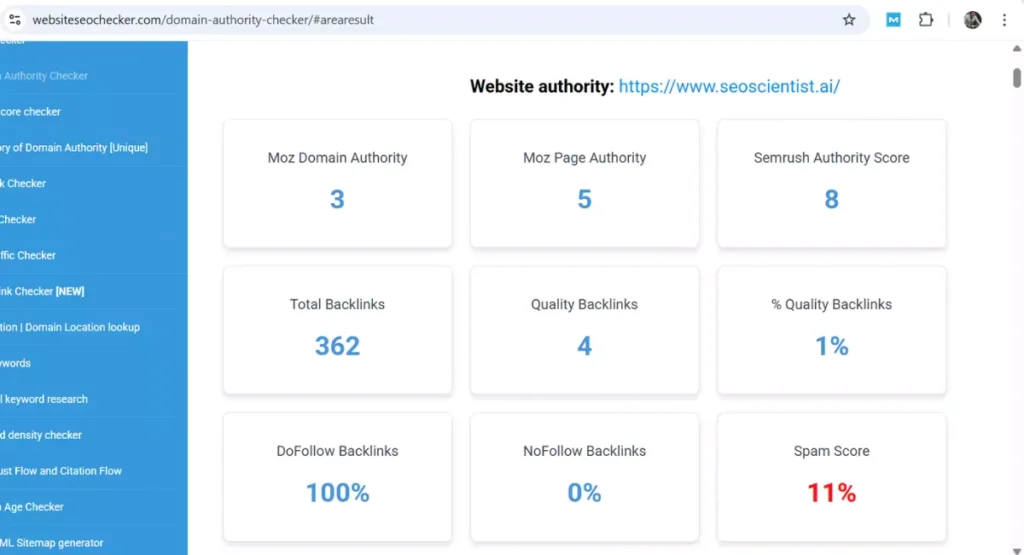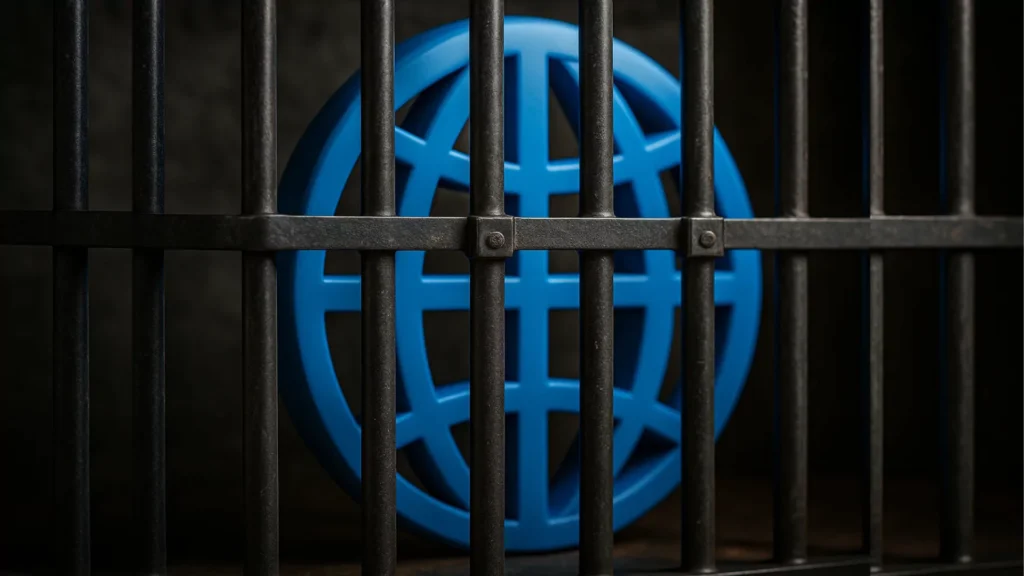Let me share a personal lesson that could save your website from a costly mistake. A few weeks ago, I decided to run an SEO audit on my website to boost its performance. Like many of you, I turned to Google and searched for “free SEO audit.” I found several websites promising quick, detailed reports at no cost. Excited, I entered my website’s URL into one of these tools, got my report, and thought I was on the right track. But a few days later, I checked my website’s Domain Authority (DA) and Page Authority (PA) using a tool like Moz, and I was stunned—my spam score had spiked from 1% to 11%! What went wrong?
What I Found was Shocking

To figure it out, I dove into Google Search Console and checked the “Links” section to see who was linking to my site. To my shock, the same SEO audit website I used had given me a backlink. The problem? That website had a high spam score, and their backlink was dragging my site down. This wasn’t the first time I’d faced this issue, and after some research, I realized it’s a common trap. Many free SEO audit tools automatically generate backlinks to your site as part of their process, often without you even knowing. If the auditing site has a poor reputation or high spam score, it can harm your website’s credibility and SEO rankings.
This experience taught me a golden rule: never run an SEO audit without checking your website’s DA/PA and the audit tool’s spam score first. Here’s why this matters and how you can protect your site.
What Happens When You Use Free SEO Audit Tools?

When you enter your website’s URL into a free SEO audit tool, it scans your site for issues like broken links, keyword performance, or page speed. Sounds helpful, right? But here’s the catch: many of these tools create a backlink to your website in their report or on their platform. If the audit website has a low DA (say, below 10) or a high spam score, that backlink can signal to search engines like Google that your site is associated with low-quality or spammy sources. This can increase your spam score, lower your DA/PA, and even hurt your rankings.
For example, Moz’s spam score measures how likely a site is to be penalized by search engines based on factors like low-quality backlinks. A single bad backlink from a spammy audit tool can raise your spam score significantly, as it did for me. According to a 2023 study by Ahrefs, 43% of websites with sudden spam score increases had recently received backlinks from low-authority or questionable sources, including SEO audit platforms.
How to Protect Your Website

Here’s a simple, step-by-step guide to avoid this trap:
- Check Your Website’s DA/PA First: Use tools like Moz, Ahrefs, or SEMrush to check your Domain Authority and Page Authority before running an audit. This gives you a baseline to monitor changes. Also, check your spam score to ensure it’s low (ideally under 5%).
- Vet the Audit Tool: Before using any free SEO audit tool, check its DA/PA and spam score. Enter the tool’s URL into Moz or Ahrefs to see if it’s reputable. Avoid tools with a DA below 20 or a spam score above 5%.
- Monitor Backlinks: After running an audit, regularly check Google Search Console’s “Links” section to see if new backlinks have appeared. If you spot a suspicious one from the audit tool, act fast.
- Disavow Bad Backlinks: If you find a harmful backlink, don’t panic. Create a disavow file to tell Google to ignore it. Open a notepad and list the domains you want to disavow like this:
# Two domains to disavow
domain:example1.com
domain:example2.com
- Submit this file via Google’s Disavow Tool in Search Console. This process can take a few weeks, but it’s effective.
- Use Trusted Tools: Stick to reputable SEO tools like Google Search Console, SEMrush, or Ahrefs for audits.
Final Thoughts
My experience was a wake-up call, but it doesn’t have to be yours. Running an SEO audit is a smart move to improve your website, but skipping the step of checking DA/PA and the audit tool’s spam score can backfire. By taking a few minutes to vet the tool and monitor your backlinks, you can avoid unwanted surprises and keep your site’s reputation intact. Learn from my mistake—always prioritize your website’s health before diving into a free SEO audit. Your rankings will thank you! DM for a Free SEO Audit

